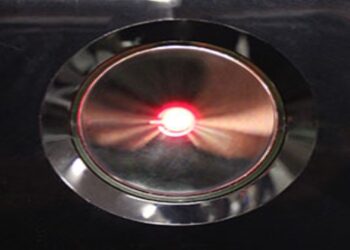What’s the Difference Between Sega Genesis and Master System?
Alright, retro gamers, let’s dive into the nitty-gritty of what sets the Sega Genesis (or Mega Drive, depending on where you grew up) apart from its predecessor, the Master System. If you’re like me, you probably have fond memories of both, but have you ever stopped to think about what’s really going on under the hood?
First off, let’s talk about power. The Master System is rocking a Zilog Z80 CPU that runs at 4MHz. Not bad for its time! But the Genesis? It’s got a Motorola 68000 CPU clocked at 7.6MHz, plus a Z80 sub-processor. That’s like comparing a moped to a sports car!
And memory? The Master System is sitting on 8KB of RAM, whereas the Genesis is flexing with a whopping 72KB. More memory means more complex games, smoother graphics, and, let’s be honest, more fun.
When it comes to sound, the Master System has a 4-channel mono audio chip. It gets the job done, but the Genesis? It’s blasting tunes with a more advanced 6-channel FM stereo sound chip. This is a game-changer—literally. The soundtracks on Genesis games have a distinct, richer sound that you just can’t get on the Master System.
Now, let’s talk visuals. The Master System has 16KB of Video RAM, pushing out a resolution of 256×192 with 32 colors from a palette of 64. It’s decent, but the Genesis kicks it up a notch with 64KB of Video RAM, a resolution of 320×224, and up to 64 colors from a palette of 512. The difference is clear: the Genesis offers more detailed and vibrant graphics.
At their core, the Master System is an 8-bit third-generation home video game console, while the Sega Genesis is a 16-bit powerhouse. This distinction is huge. It affects everything from processing speed to the complexity of the games each console can handle.
A little history for you: the Master System was essentially a revamped version of the Sega Mark III, which hit Japan in 1985. The Genesis came later, making its grand entrance in 1988.
Here’s how they rolled out: the Master System arrived in North America in 1986, Europe in 1987, and Brazil and Korea in 1989. The Genesis made its U.S. debut in 1989, ready to rumble.
Let’s talk numbers. The Master System sold around 10-13 million units. Respectable, but the Genesis? It moved about 30 million units. That’s a testament to its popularity and impact.
The Master System, despite being technically impressive for its time, struggled to gain significant traction in Japan and North America. It just couldn’t break through the Nintendo wall.
But here’s where it gets interesting: the Master System found a loving audience in Europe and Brazil, while the Genesis took North America by storm. And let’s not forget Blast Processing—a fancy marketing term—that was all about hyping up the Mega Drive.
Gameplay and Game Library
The Genesis boasts a library of over 900 games on cartridges. That’s a lot of gaming! The Master System, on the other hand, has a smaller, more curated library.
Consider “Street Fighter II.” On the Master System, you’re missing out on multiplayer action. Then there’s “Alien Syndrome,” which offers similar gameplay on both consoles, but the Genesis version just feels more polished.
And who could forget “Sonic the Hedgehog”? The Master System version is slower and has a different level design compared to the 16-bit Genesis version.
Now, here’s a twist: some gamers actually prefer the Sonic games on the Master System! They often praise the level design and gameplay mechanics, arguing that they’re superior to the Genesis versions. It’s all a matter of taste, right?
One more thing: the Master System II, released in 1990, was a redesigned, cartridge-only version that notably lacked RGB output. A simpler, more streamlined machine.
Overall Market Impact
The Genesis was a major player in the “console war” against Nintendo’s Super Famicom. The Master System, however, entered the scene when Nintendo was already dominating the market. It was a David versus Goliath situation.
Many gamers have a soft spot for the Master System and its unique titles like “Alex Kidd in Miracle World” and “Phantasy Star.” These games offered something different, even if they couldn’t quite dethrone Mario.
With only 114 officially licensed games released in the U.S., the Master System struggled with limited third-party support and long waits between big releases. It was a tough battle.
So, here’s the bottom line: the Master System might have been Sega’s second most successful console, but the Genesis stands out as the true powerhouse. It had the hardware, the sales, and a legacy that continues to resonate with gamers today. Whether you grew up with the Master System or the Genesis (or both!), each console holds a special place in gaming history.











